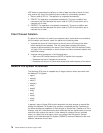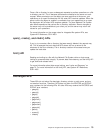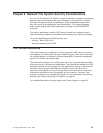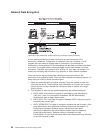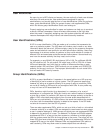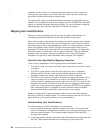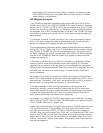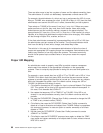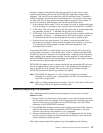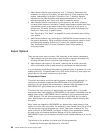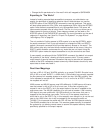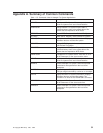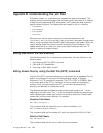There are other ways to tap into a system of users and the objects owned by them.
The administrator of a client can deliberately impersonate a remote server UID.
For example, the administrator of a client can log on and access the UID of a user,
Mary on TULAB2, who accesses the client. If the UID of Mary is 123, then the client
administrator can assume this UID and, in effect,
become
Mary on both systems.
There exists on TULAB2 a file named /home/mary/index.html. Before any users
perform actions on this file, they must have its file handle. Users with proper
authorities can get this handle by making a request to the parent directory. The
parent directory of /home/mary/index.html is /home/mary. A file handle is a unique
identifier of an object that describes the object without ever changing. A file handle
will last through multiple IPLs, crashes, and so on.
If the client administrator successfully impersonates Mary with a UID of 123, then
the administrator can gain access to file handles. The client administrator would
then have the ability to read, write, change, and delete Mary’s files.
The solution in this case is for namespace administrators to follow the rules of
proper and appropriate UID mapping across the namespace. Administrators also
need to pay attention to how they export file systems. The trusted community
should not be opened up to outside clients or anonymous users who request
access.
Proper UID Mapping
An administrator needs to properly map UIDs to provide a secure namespace
where users have access to the appropriate information on the appropriate
systems. There is a step-by-step process for doing this one user and system at a
time.
For example, a user named Joan has a UID of 27 on TULAB1 and a UID of 14 on
TULAB2. Chris Admin feels that these UIDS should be the same across the two
systems to provide matching profiles that he has set up. If Joan owns any objects
within the integrated file system, then Chris Admin cannot change her UID on
TULAB2. He performs this series of events:
1. Chris Admin chooses one UID number for Joan’s universal Network File System
UID. This number will be Joan’s UID across the entire network namespace. In
this case, Chris decodes that JOAN=27.
2. He creates the temporary UID of TEMP=27 on TULAB2. If this UID is not
already in use and processes correctly, then Chris Admin continues with the
process.
3. He uses the CHGUSRPRF (Change User Profile) command to change the UID
of TEMP to any unused number (12345).
4. Chris Admin then uses the DLTUSRPRF (Delete User Profile) command to
delete all of Joan’s directories and objects from TULAB2. Before he completes
this command, however, he uses an option to transfer ownership of all these
objects to TEMP.
5. He then uses the CRTUSRPRF (Create User Profile) command to create
JOAN=27 on TULAB2.
6. Chris Admin uses the DLTUSRPRF command once again to delete the TEMP
user profile and restore ownership of all objects back to Joan, whose universal
NFS UID is now 27.
86 OS/400 Network File System Support V4R4



